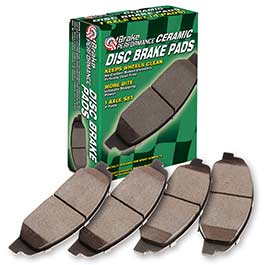Ceramic Brake Pads Break In Procedure

This procedure will prevent the pads from getting too hot until the resins have fully cured.
Ceramic brake pads break in procedure. An alternative 60 20 10 procedure is to gradually brake from 60 mph to 20 mph 10. Allow at least 30 seconds between brake applications for the brake pads or shoes to cool down it is critical to follow cool down procedures to avoid damaging nao ceramic and semi met friction material as well as the rotor drum. The bed in procedure for street brake pads is as follows. Rapid heat build up in the brake system can lead to warped rotors and or glazed brake pads.
Upon completing the procedure allow the brake system to completely cool before racing. Many brake experts recommend breaking in new brake pads with a 30 30 30 procedure. The break in procedure is critical to brake performance. Hawk racing pads blue black ht 10 ht 12 may require a different bed in procedure.
Do not drag brakes while car is moving during break in procedure. 30 gradual stops from 30 mph with 30 seconds in between each stop for the brakes to cool. Breaking in new ceramic brake pads is an important procedure that is needed to maximize their performance according to experts. Bedding in commonly known as breaking in new brake pads and rotors is necessary for new brakes to work properly.
Once a new set of ceramic brake pads are installed you need to know how to correctly bed in the pads. It is very important that this initial layer of friction material is evenly distributed. Do not engage pedal while car is stopped at any time following the break in procedure. The break bedding in procedure is a process of quickly heating and cooling the brakes in a repeated fashion and while doing so it deposits a layer of pad material on the rotor surface.
The bed in process leaves a film of brake pad material on the rotor and creates the perfect environment for the ceramic brake pads to grip the. The process works to put a layer of material onto the friction surface of the rotor from the brake pad. Temperature needs to be slowly heated to max use which will create a smooth even pad transfer. Contact your sales specialists at the tire rack for racing application information.
The reason for a proper break in is to establish an even layer of friction material deposited on the rotors from the brake pads. Follow the brake pad manufacturer s recommended break in procedure taking care not to produce excessive heat in the system. Most brake pad compounds will take up to 300 500 miles to fully develop an even transfer film on the rotors. Replacing old worn brake pads may include a new set of brake pads made from ceramic components.


















